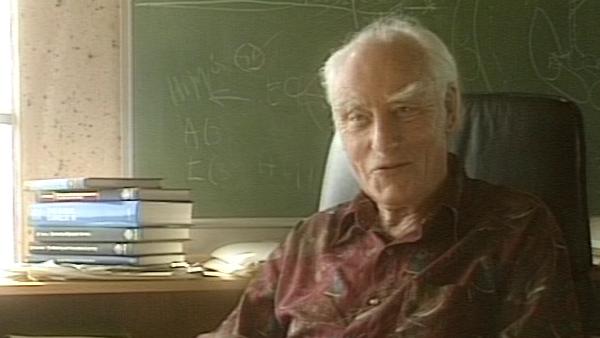NEXT STORY

If not Crick and Watson then who?
RELATED STORIES

NEXT STORY

If not Crick and Watson then who?
RELATED STORIES


|
Views | Duration | |
|---|---|---|---|
| 81. How being a scientist affects the way one sees the world | 1 | 642 | 01:34 |
| 82. The complexity of a single cell | 564 | 01:50 | |
| 83. The length of a strand of DNA | 553 | 01:21 | |
| 84. George Gamow and the RNA Tie Club | 1 | 1017 | 03:05 |
| 85. How we came to write the genetic code | 594 | 01:48 | |
| 86. If not Crick and Watson then who? | 2 | 834 | 02:11 |
| 87. Should Rosalind Franklin have shared the Nobel Prize? | 2165 | 00:36 | |
| 88. Which field of science is the right one for you? | 1 | 682 | 02:05 |
| 89. Getting the balance right between work and relaxation | 765 | 01:31 | |
| 90. What is at the bottom of consciousness? | 1 | 1096 | 02:33 |

What… the problem is that… that the language of genes is written on the DNA and the RNA in a… in an alphabet of four different chemicals, rather like the Morse Code which has got two, a dot and a dash or three if you call a space and so on. Whereas the language of proteins is written in 20 different amino… 20 different types of side chains or amino acids which is going to make up the proteins rather like our language which has about 26 characters, for example. It’s like trying to find how you go from the Morse Code to the ordinary alphabet which you… the Morse signal from the ordinary alphabet which you know is known as the Morse Code and that’s why it’s called the genetic code. Because actually code is the wrong word, it should be called a cypher, strictly speaking, but genetic cypher doesn’t sound nearly as good as genetic code so it just as well that we used the wrong term. And he had an idea about how that might happen in relation to the DNA structure which turned out to be wrong, then we realised we could think of it in abstract terms and we had various attempts and ideas, all of which turned out to be wrong and now we know the problem is insoluble from that point of view. So, it’s a salutary lesson as to how you can spend quite a bit of time on a problem which looking back, you can see there was no possible answer.
[Q] Does that matter, that, and does it feel like a waste of time or what?
Well, it did in a certain sense but on the other hand we spent… we spent other time thinking about the experiments which didn’t depend on this particular point of view and there were certain things as to exactly whether you read them three at a time and things of that sort and it focused us on that sort of way of thinking. I think we’d have got there anyway but… so, it was partly a waste of time but not totally so.
The late Francis Crick, one of Britain's most famous scientists, won the Nobel Prize in Physiology or Medicine in 1962. He is best known for his discovery, jointly with James Watson and Maurice Wilkins, of the double helix structure of DNA, though he also made important contributions in understanding the genetic code and was exploring the basis of consciousness in the years leading up to his death in 2004.
Title: How we came to write the genetic code
Listeners: Christopher Sykes
Christopher Sykes is an independent documentary producer who has made a number of films about science and scientists for BBC TV, Channel Four, and PBS.
Tags: Morse Code
Duration: 1 minute, 48 seconds
Date story recorded: 1993
Date story went live: 08 January 2010